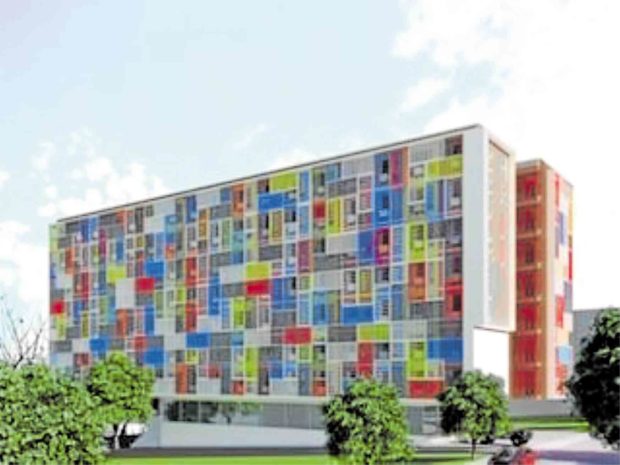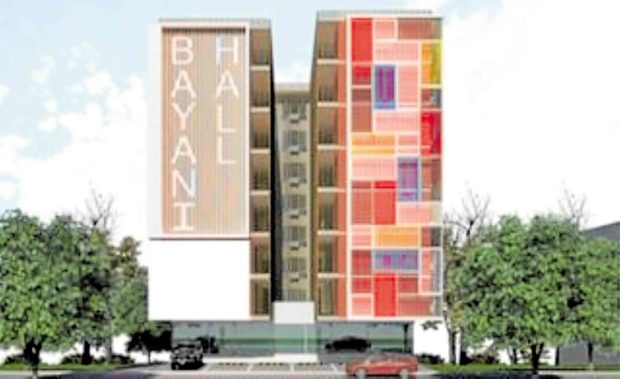Co-living and co-working: Real estate ideas for sustainable cities and communities

The concept of urban co-living and co-working spaces has long gained traction globally and even in the Philippines, where these living and working hives have literally been abuzz with activities.
A co-living space can serve tourists, students, city workers or temporary staffers in either an entire building or within one, which allows for spaces, facilities and amenities to be shared. With clean bedrooms, comfortable communal bathrooms, airconditioned and naturally ventilated spaces, and graphically rendered interiors, these places provide real estate options that showcase creativity and ingenuity. Every facility is an economical solution that has also helped raise the standards of dormitory living for many city dwellers.
An alternative
Jelmer Ikink, one of MyTown’s chief innovators, describes the evolution of co-living spaces as a way of generating more quality time and a better life for occupants. They came up with an alternative that can help ease the plight of the weary urban worker, with the traffic, long commutes and rising prices of city real estate. They revolutionized the delivery of a “landlord-tenant arrangement” to become one of future-thinking, interior design brilliance and technology integration.
Residents of MyTown get to also enjoy social activities within their urban hives aside from the usual provisions of a café and a gym. It’s a new way of living in an otherwise congested city where traditional options include renting rooms in high-risk, dense neighborhoods or being bedspacers in houses where there are no amenities or shared services.
Real estate innovator
Another real estate innovator in the picture is entrepreneur Vince Padilla, who came up with Amio in locations like Tayuman in Manila. Amio features capsule beds lined up on three interior vertical levels, providing urban workers their own little cocoon of a bed, outlets to charge gadgets, storage for personal items, and of course, communal bathrooms. Room interiors are decidedly warm and inviting.
New ventures that challenge current offerings do not only provide comfort for the Monday-to-Friday Metro Manila citizens, but also help ensure safety, security for their belongings and general health.
Studies have shown that most city commuters living in the outskirts of the mega metropolis only get an average of 3.5 hours of sleep per night as they endure long hours on the road. Can you imagine the impact of this on their personal health, wellbeing and family life?
We therefore applaud these real estate solutions to help draft sustainable ideas in cities and communities. Architects, engineers, builders and developers are encouraged to keep innovating towards the goal of inclusive architecture and the fulfillment of the United Nations’ 17 Sustainable Development Goals for 2030.

Bayani Hall student dormitories, designed by PDP Architects for Vester Corp., with the muted colors of the Philippine flag on the building façade.
Affordable accommodations
Outside the metropolis, Baguio-based real estate entrepreneur Alex Bangsoy is focusing on students and investors. His Bayani Hall dormitories, under Vester Corp., innovates not just in the provision of well-appointed yet affordable accommodations but also in the efficiency of space allowing for a smart financial investment.
Condominium units that are sold can be rented out and managed by the company for the investor. Roof deck swimming pools, common libraries, gyms, rentable commercial lease spots, ample parking and biophilic design enhance dormitory life.
The distinction of a brand encouraging students to be the future intellectual and hardworking heroes of the country makes Bayani Hall a smart choice. The communities it aims to develop will help nurture the students’ goals on academic priorities and discipline in their physical environment.
Communal offices
Work-sharing for collaborative desk spaces is an international real estate phenomenon that has cleverly carved out communal office interiors in every major city—from New York, Amsterdam, London, Tokyo, Jakarta and Manila.
In Bali, certainly not a city center but a vacation haven, a communal work-space even allows its tenants to come in their swimsuits and board shorts as they answer e-mail, run their tech firms on regular hours each day and network with like-minded individuals. They then head back to the sea to surf or enjoy time on the sand.
Manila is home to many such innovations, including the globally recognized Regus which created Spaces. KMC Solutions has its Piccadilly Solutions that acts as both a start-up home and an incubator to investors before venturing out into acquiring regular and bigger corporate spaces. There is WeWork, inspiring in their cut up of interior work zones, as seen in their many choice spots around the world.
We also have Common Ground, with its Rockwell location being a perfect office with commanding views of the city skylines. Ayala Land’s Clock In, carefully and cozily curated to provide communal desk spaces within both commercial and hotel areas, has excellent locations and complete businessmen’s amenities. There are more present and even many more coming in to be set up not just in Manila but in key cities like Cebu and Davao.
It is with much hope that real estate developers shall continue to create solutions to improve the quality of life for people and help create architecture and interiors that shape new ideas. With shared spaces, the habits of occupants are instilled to foster community harmony, respect for each one’s space and the maximization of property values.
The author is a leading architect in the country focusing on hospitality, high rise residential, healthcare, logistics and industrial design and retail mixed-use buildings. She espouses Inclusive Architecture and the UN’s 17 Sustainable Goals for 2030. As an urban dweller, she wrote this article from her phone at the back seat of her car as her driver navigated through heavy traffic in the streets of Manila. Email the author at mlcsaldana@gmail.com

